Sony VPL-VW1000ES Review
Sony VPL-VW1000ES
Ladies and gentlemen, the 4k AV era has arrived. Kind of.
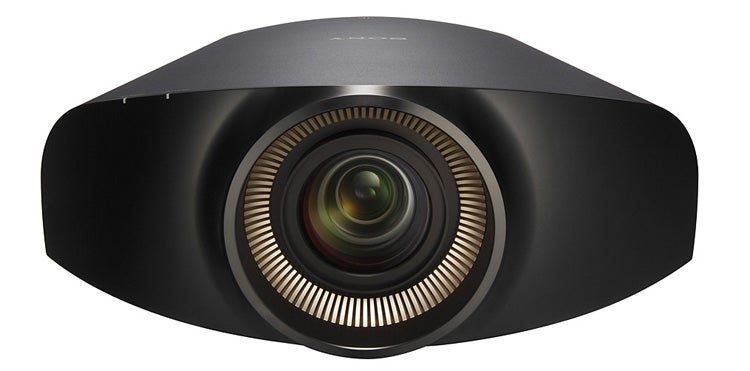
Verdict
Pros
- Brilliant 3D pictures
- 4K images look insanely good
- Upscaled 2D images much better than expected
Cons
- Hardly any native 4k content right now
- Black levels not as good as those from JVC’s latest projectors
- Limited colour management
Key Specifications
- Review Price: £16799.00
- SXRD projector
- 4K native resolution
- active 3D playback
- 2000 Lumens light output
- High-end upscaling
Today we have mostly been standing two inches away from our projection screen.
This is not normal behaviour for us, even by our own nerdy standards. But it’s the sort of activity that Sony’s VPL-VW1000ES projector inspires, on account of its killer app: a native resolution of 4096×2160 pixels. Or ‘4k2k’ to give it its more attention-grabbing nickname.
This resolution gives you four times as many image pixels as you get with a standard full HD 1980×1080 projector. And if you’re even slightly geeky, it’s impossible to resist the urge to get your face right up to such hi-res pictures a) to see if it’s still possible to see pixel structure in 4k images and b) to fully appreciate all the extra detailing 4k projection makes visible.
We’ll talk more about our experiences of the VW1000ES in action later, but for now, there’s a lot of background and context to cover. So let’s start right at the beginning with how the VW1000ES looks.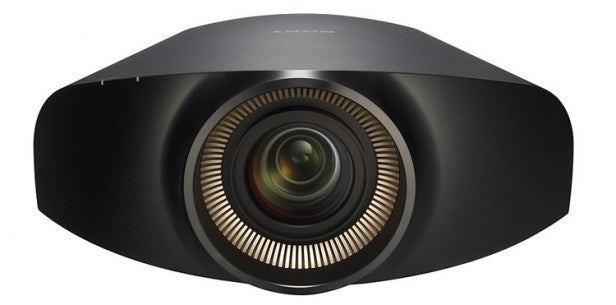
It’s certainly a striking bit of kit. It’s markedly larger than Sony’s non-4K SXRD projectors, though with a depth of 640mm it’s not unmanageably large. We managed to position it on our normal projector stand without anything looking precarious, at any rate.
Its large, centrally mounted, high-quality lens dominates the VW1000ES’s elliptical front view, and is given added emphasis by some short gold ‘stripes’ that decorate the slope between the projector’s front edge and the recessed lens. The main body is also distinctive thanks to the sandpapery finish to its grey-black exterior.
Connections
Connections are all positioned along the bottom of the projector’s left hand side, under a lip that makes them a little tricky to access. We suspect custom installers might have preferred rear-mounted sockets, but this is only a minor point.
The connections on offer include two v1.4 HDMIs, a LAN port for service use, and a second LAN to which you connect the projector’s external 3D transmitter. However, this external transmitter is merely an option, for handily the VW1000ES also has an integrated 3D transmitter that worked very stably during our tests.
Inside the VW1000ES are three (one each for the red, green and blue colour elements) new 4096×2160 SXRD chipsets – SXRD being, of course, Sony’s version of the same Liquid Crystal on Silicon technology that forms the basis of JVC’s D-ILA projection system.
Cramming so many pixels onto a chipset small enough for use in a home as opposed to commercial cinema projector has been the largest of many challenges Sony has had to overcome in making the VW1000ES a living, breathing and – at under £17,000 – surprisingly affordable reality.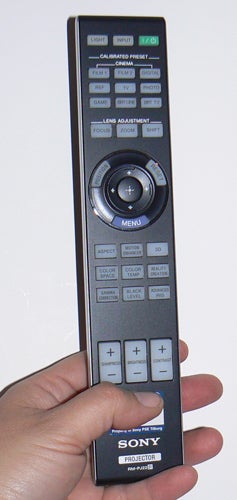
The 4096×2160 native pixel count tallies with the cinematic 4k2k standard, as you would expect given that the VW1000ES is an offshoot of the 4k2k projectors Sony sells to so commercial cinemas. However, it’s worth noting that the 4096×2160 resolution doesn’t equate precisely to the usual home cinema aspect ratios. It’s 1.89, while typical widescreen Blu-ray/DVD transfers come in at 1.78:1 or 1.85:1. As a result, these widescreen films don’t benefit from the full pixel structure of the VW1000ES’s panels and appear with small bars around them.
Confusion could reign
The projector does provide simple ‘zoom’ options for removing these bars, but we can certainly imagine this issue causing confusion among end users. Especially as the provided Zoom test pattern doesn’t really prove helpful in getting the right image size to suit different source ratios.
On the upside, the zoom tool is motorised (so you can control it from the remote), as are the projector’s focus and optical image shifting tools. We were very impressed, too, by both the range and subtlety offered by all three of these adjustments.
The VW1000ES’s onscreen menus initially seem well-stocked with features. A long list of mostly well-considered picture presets heads things up, with other key options including Sony’s Reality Creation system (which includes the projector’s all-important 4k upscaling system); various settings for Sony’s Cinema Black Pro dynamic iris system; high and low lamp modes; off, high and low settings for Sony’s Motion Enhancer software; and finally, within an ‘Expert Setting’ menu, black level adjustment, gamma preset selection, colour correction, white boosting, and Colour Space settings.
What you do NOT get, though, is a full colour management system. This is a surprising omission on a near-£17,000 projector, and could frustrate professional installers. Just as well, then, that Sony’s presets are so well calibrated.
Another welcome feature you do get, though, is a handy Picture Position memory slot that allows you to shift between 1.78/1.85:1 and 2.35:1 aspect ratios without needing an external anamorphic lens attachment. There’s a feature too, that enables you to adjust the alignment of the three SXRD chips, so you don’t have any areas of colour bleed.
We’ll get to the VW1000ES’s performance soon now, we promise. But there are still two more bits of context-setting we need to do.
First, there’s the difference between Sony’s 4k claims and the ‘4k’ claims of the latest JVC DLA-X70/X90 projectors. Whereas Sony genuinely gives you 4096×2160 pixels of picture data on each of its three chipsets, and can upscale lower resolution inputs to this level by adding in extra pixels of new picture information, JVC’s e-Shift engine instead essentially doubles the pixel density of a full HD source picture, without actually adding any new picture information. In fact, the JVC models don’t accept native 4k sources.
The 4K elephant in the room
Next there’s a rather substantial elephant in the room: the current lack of 4K video content. For while many films are now shot in 4k2k for cinema distribution, there’s just no easy way to get such ultra-HD masters into your home cinema. Blu-rays don’t have enough capacity to take full 4k2k transfers, and downloading huge 4k film files from the Internet practically would require a much faster broadband connection than the majority of the UK currently enjoys.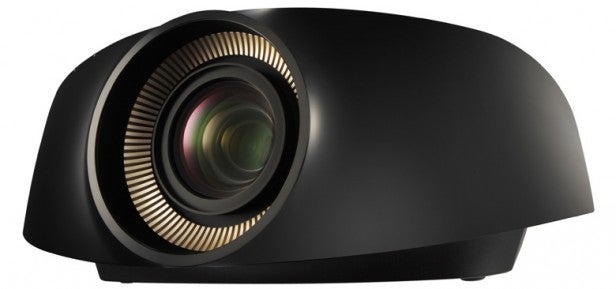
Even the computational processing power required to successfully play 4k video files is formidable. To aid us with our tests, Sony supplied the biggest tower PC we’ve ever seen, loaded with a Sapphire HD 7970 3GB GDDR5 graphics card and Intel Core i7 2700K 350GHz socket 1155 8MB L3 cache CPU. And even this suffered with noticeable stuttering and screen tearing when showing the few minutes of 4k material Sony had managed to get on there. If you fancy trying to build a 4K-ready PC for yourself, let us know in the comments section and we’ll reply with the full spec on the machine used for our tests.
The various issues just described with getting 4K into your home – together with what currently seems to be resistance from Hollywood to making such high quality video available to the domestic market – mean that true 4k sources are currently excruciatingly rare. Our demo material comprised a reel of specially shot time-lapse sequences from Italy, and a minute or so of clips from open movie project Sintel (www.sintel.org).
Some day our 4k prince will come
The apparent consumer enthusiasm out there for 4k, not to mention Sony’s own vested interest now in getting 4K sources into homes, will likely mean that domestic 4K video does eventually arrive in quantity. But the general consensus is that you’re talking years rather than months before this happens. So if you get a VW1000ES you’ll have to be patient before you can unleash its full potential.
While 4K video is in short supply right now, though, there is a more static 4k solution already at your fingertips. For VW1000ES purchasers all get given a voucher enabling them to download an update for the PS3’s PlayMemories application that allows native 4k digital photos to ship to the VW1000ES, despite the console only sporting an HDMI 1.3 port. 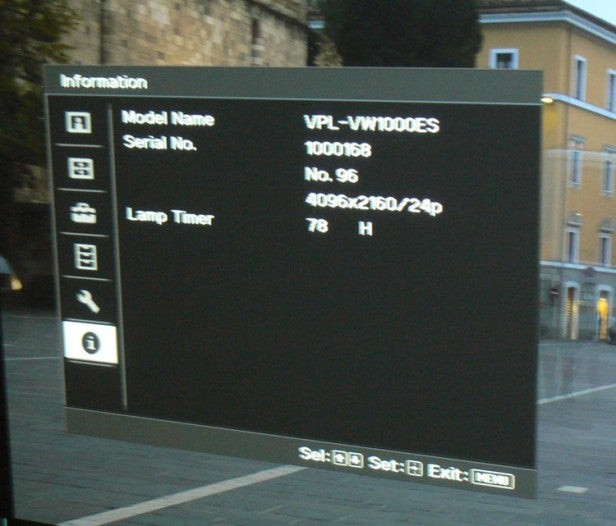
Inevitably we kicked off our tests by checking out the VW1000ES’s groundbreaking 4k pictures. And what we saw can only be described as jaw-dropping.
With the Italian video clips, the best way to describe the experience is to say that it felt as if you were looking through an open window at a real view outside, thanks to the astonishing amount of detail, density and clarity on show. There’s also seemingly no video noise at all, contributing still further to the sense that you’re not actually watching a video device, but rather just staring at reality.
Staggering detail
With a shot of a magazine vendor’s stall we could read far more text on the titles on sale than we could in normal HD. Views of a rugged country landscape reveal grass, stone and leaf detail that frankly beggar belief. A close up of leaves and buds on a tree reveal individual fibres around the buds that are ordinary HD just can’t show. Stick your head right up to the screen as we discussed at the start of this article, meanwhile, and you still can barely see any trace of any image structure to ‘give away’ the mechanics behind the stunning images.
Don’t think, though, that you only see the 4k difference if you sit close to the screen. From a perfectly normal viewing distance the all-round perfection of the 4k image is still utterly apparent and totally compelling, giving you a much more intense connection with what you’re watching. Little wonder that 4k resolution is considered comfortably adequate for commercial cinema purposes.
The 4k advantage was a little less obvious with the Sintel animation than it was with the Italian time lapse footage, partly because of the amount of PC-induced screen tearing the trailer suffered with, and partly because there’s inevitably less chance for 4k detailing to ‘shine’ on a rendered animation. But there are some closeups of two characters towards the end which reveal an astonishing amount of texture mapping and clarity in their hair and clothing.
Almost unbelievably good though real 4K looks on the VW1000ES, real 4K content is currently going to take up precious little of your viewing time for the forseeable future. So we’re fascinated to see how the projector’s 4k upscaling system shapes up.
Upscaling wonder
Thankfully – crucially, in fact – it shapes up exceedingly well. During previews of the VW1000ES we’d seen obvious unwelcome processing side effects, but these have been almost completely abolished on the finished product. So if you engage the Reality Creation system while watching a Blu-ray, the VW1000ES now adds bags of extra detail, texture and clarity without generating seemingly any unwanted side effects such as motion ‘haloes’, colour striping or unnatural levels of grain or dot crawl. The mind boggles at just how much power Sony has had to throw at its upscaling engine to deliver such high quality results given how many pixels are involved.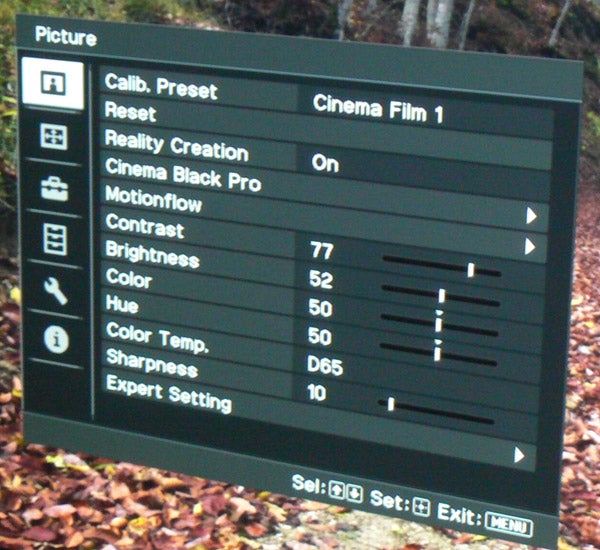
It’s important to stress that the impact the upscaling has on Blu-rays is so strong that it can clearly be seen from a normal viewing distance; you don’t just have to have your nose stuck up against the screen again to appreciate the projector’s 4k efforts.
This upscaling talent is, of course, crucial if the VW1000ES is to justify its price ahead of more true 4K sources arriving, given that its price pitches it against full HD projectors from the likes of Sim2 and Runco.
Excellent colour response
With these rival machines in mind, along with, inevitably, JVC’s 4k ‘e-shift’ X70 and X90 D-ILA models, we need to shift our focus away from simply ogling the VW1000ES’s astounding fine detail and sharpness. Looking at its colour response, though, it holds its own very nicely thanks to both the vibrancy of its tones and the almost infinite subtlety of its blends – driven by onboard 12-bit processing.
The VW1000ES’s pictures are reasonably bright, too. Not as bright as Sim2’s (30 grand!) Lumis or £16k Nero 2 models, but markedly brighter than JVC’s projectors and bright enough to look punchier and more dynamic than mainstream projectors or any previous Sony SXRD models. 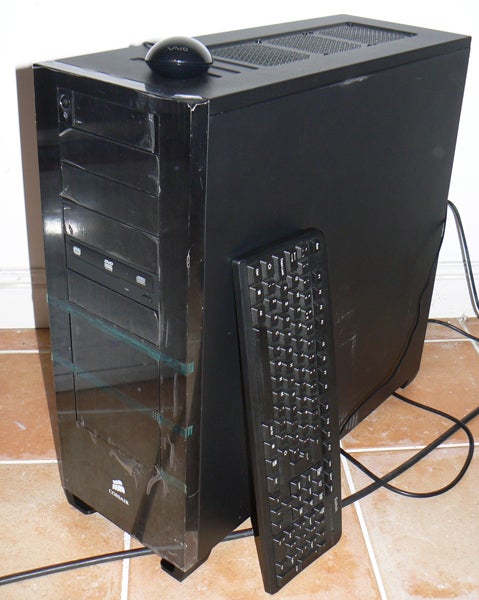
Given how bright it is, we were also very impressed by how quietly the VW1000ES runs, even when using its lamp on High for 3D viewing.
3D excellence
Talking of 3D, this is another area where the VW1000ES (comfortably) outguns JVC’s models. For as well as its 3D pictures looking notably brighter, they also suffer much less from crosstalk ghosting noise. In fact, we struggled to see any crosstalk at all.
Sim2’s Lumis 3D and Nero projectors deliver a bit more brightness with their 3D images than the VW1000ES does, but nonetheless Sony’s 3D efforts can be considered outstanding.
There are only two areas where the VW1000ES comes second to both Sim2 and JVC projectors. First, its upscaling engine, while outstanding with Blu-rays, can struggle with standard definition sources – as might be expected, really, given how much new picture information is having to be calculated.
Second, intensely dark sequences like the one where Lord Voldemort and his army look down on Hogwarts from a hillside show a little grey clouding over parts of the picture that should look black – a slight black level shortcoming that can also lead to such images also losing some shadow detail.
Verdict
Hot on the heels of its spectacular success with its 46HX853 TV, Sony has struck again with the VW1000ES. This is a genuinely groundbreaking projector which, even with its minor black level issues, remains a scintillating performer.
Especially as, of course, it introduces us to the emphatic joys of 4k. Yes, these ultra-high definition pictures look at their mind-blowing best when your source is a native 4k one. But with such sources not likely to be widespread for years, perhaps the single most important thing about the VW1000ES is that its 4K upscaling also makes Blu-rays look better than normal. So its 4k talents don’t just have to sit there unused until Hollywood finally gets its home 4k2k act together.
Trusted Score
Score in detail
-
Value 9
-
2D Image Quality 9
-
Features 9
-
3D Image Quality 10
-
Design 8
Features
| Native Aspect Ratio | 1.89:1 |
| Projector Type | SXRD |
| Brightness (Lumen) | 2000 ANSI Lumenslm |
| Contrast Ratio | 1,000,000:1 claimed |
| Full HD 1080p | Yes |
| 3D Ready | Yes |
| Max Diagonal Image Size (Inch) | 300in |
| Lamp Type | UHP |
| Lamp power (Watt) | 330W |
A/V Ports
| HDMI | 2 (v1.4) |
| Component | 1 |
| Composite | 1 |
| Ethernet | 2 (service and 3D extender) |
| WiFi | no |
Physical Specifications
| Height (Millimeter) | 200mm |
| Width (Millimeter) | 520mm |
| Depth (Millimeter) | 640mm |
| Weight (Gram) | 20g |

